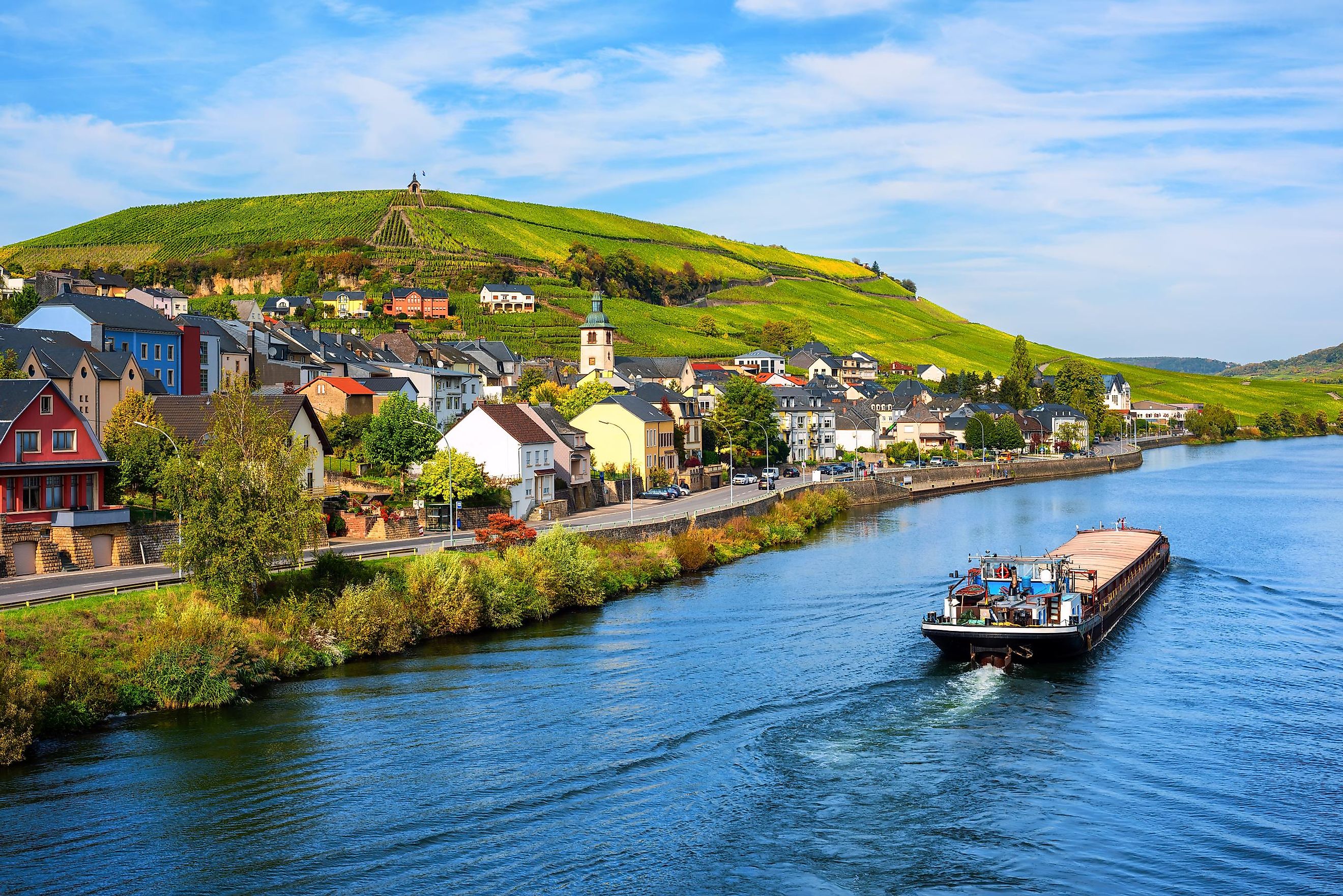
Which Countries Have the Least Natural Disasters
From the recent 7.5 magnitude earthquake in Japan to 2024's first cyclone in Madagascar, natural disasters seem to be all around us. These events are unpredictable and cause major damage to infrastructure, economies, and lives. Tsunamis, landslides, tornados, and earthquakes are a few examples, each of which uniquely impacts our lives. Thankfully, humans have come a long way in the past few centuries and now understand how and why these hazards take place. For example, the movement of Earth's tectonic plates is a cause of earthquakes, tsunamis, and volcanic activity. Using this knowledge, we can estimate the likelihood of natural disasters in each country.
Researchers have also gone further to assess the overall natural disaster risk per country. The WorldRiskIndex estimates this risk by using 28 indicators instead of just looking at the chance of a natural hazard event. These indicators range from society's vulnerability to a country's financial ability to sustain a major event. Combining all this information, one can find the safest countries from a natural disaster perspective based on a scoring system. Not only are these places astray from the risk of disasters, but they are also prepared to deal with anything that comes their way. In this article, let's take a look at these countries and why they are the safest. Who knows, maybe you will find a safe place to escape the disaster risk.
1. Andorra - 0.22
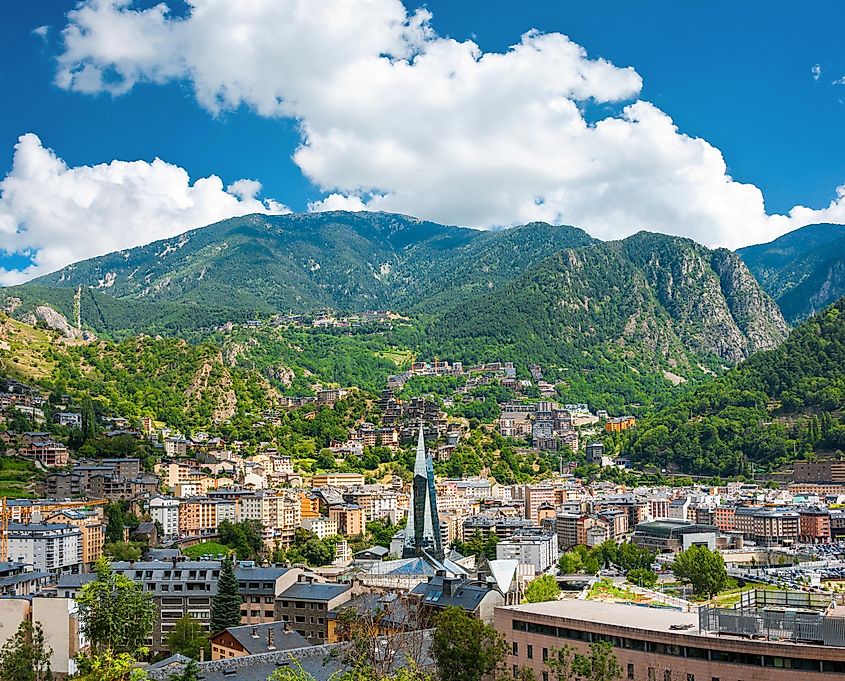
Located 400 miles from Monaco, the Principality of Andorra is a landlocked country on the Iberian Peninsula. Similar to Monaco, Andorra is a haven of wealth thanks to its strong banking sector and low taxes. This ensures a strong economy as well as high-quality services throughout the nation. Andorra is also the 16th smallest country in the world, with a population of less than 80,000. This combination of factors creates an ideal environment for natural disaster management. With a strong economy, the country can bear financial damages, while a small population is easy to manage in disasters.
That said, Andorra doesn't need to worry too much as it is at little to no risk of major natural hazards. The country has no record of damaging earthquakes and is miles from open water, making any kind of disaster a rare occurrence. To this end, Andorra has a disaster risk index (WRI) of 0.22, with great results in exposure, coping abilities, and susceptibility for a safe environment. If you want to get away from natural disasters, Andorra is the place to be.
2. Monaco - 0.24
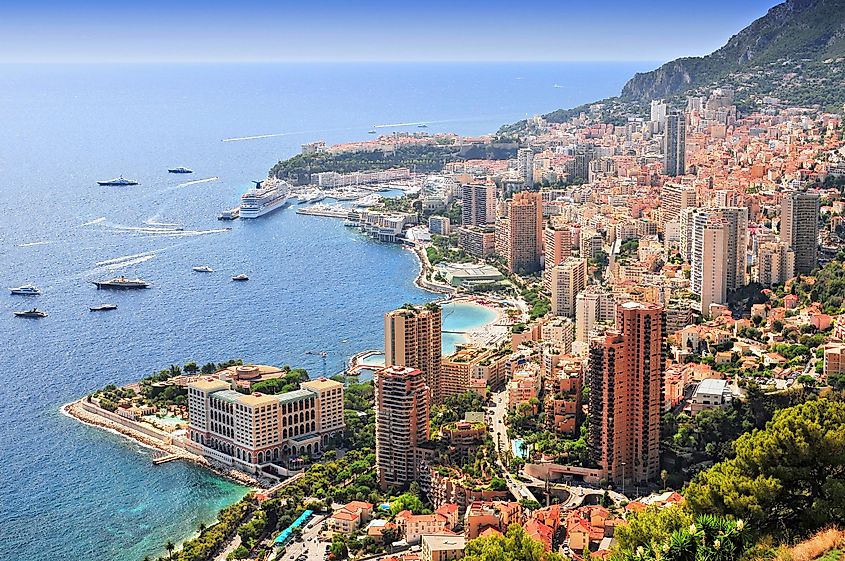
With a disaster risk index (WRI) of 0.24, the microstate of Monaco is the second least affected by natural disasters. Located on the French Riviera, it is bordered by France on three sides and has a coastline of less than 2.5 miles. The area is not located near tectonic plate boundaries or volcanos, which reduces the risk of geological disasters. Similarly, it lies along the Mediterranean Sea, which is seperated from major oceans by Italy, Spain, France, and northern Africa. Thanks to this, there is a low chance of tsunamis and floods in the region. Thus, Monaco has minimal exposure to all types of natural hazards.
If a natural disaster were to happen, Monaco would also be quick to cope and adapt. This is due to the country's strong economy and immense wealth. Often recognized as one of the world's most expensive places, it has the highest number of millionaires and billionaires per capita in the world. This abundant wealth translates to high-quality services from great education to convenient transportation. Monaco would also have support from France, who manage the defense and safety of the microstate. Thus, in case of a natural disaster, the country would be able to manage well.
3. San Marino - 0.36
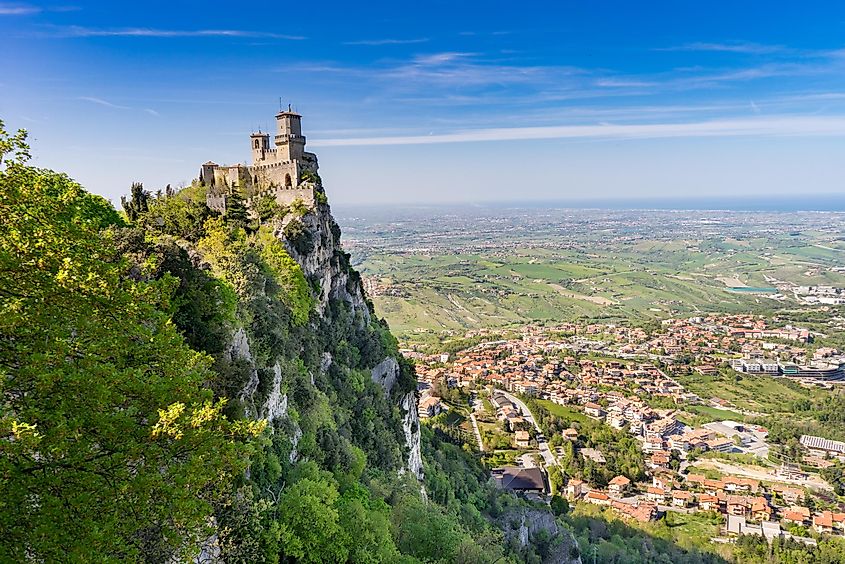
San Marino is a scenic microstate located in the Italian peninsula. It lies along the northeast side of the Apennine Mountains and is the fifth-smallest country in the world, with a population of just under 34,000 people. Most of these are affluent businessmen drawn in by the country's great healthcare, tourism, and services. These factors contribute to San Marino's strong coping capabilities when it comes to natural hazards. For example, the country has a high quality of infrastructure and healthcare. These characteristics make it well-equipped to deal with the fallout of natural disasters. Additionally, the country has disaster emergency plans on hazard mitigation, emergency operations, and checklists to keep everyone safe.
That said, these services are seldom needed as San Marino is on the safer end of the world regarding exposure to natural hazards. Earthquakes in the nation are infrequent, and most seismic activity is due to tremors from nearby events. In addition, Italy and the Adriatic Sea surround the nation, mitigating the risk of major tsunamis or floods. With all these factors, San Marino ranks third on the list with a "very low" risk of natural disasters.
4. Singapore - 0.63
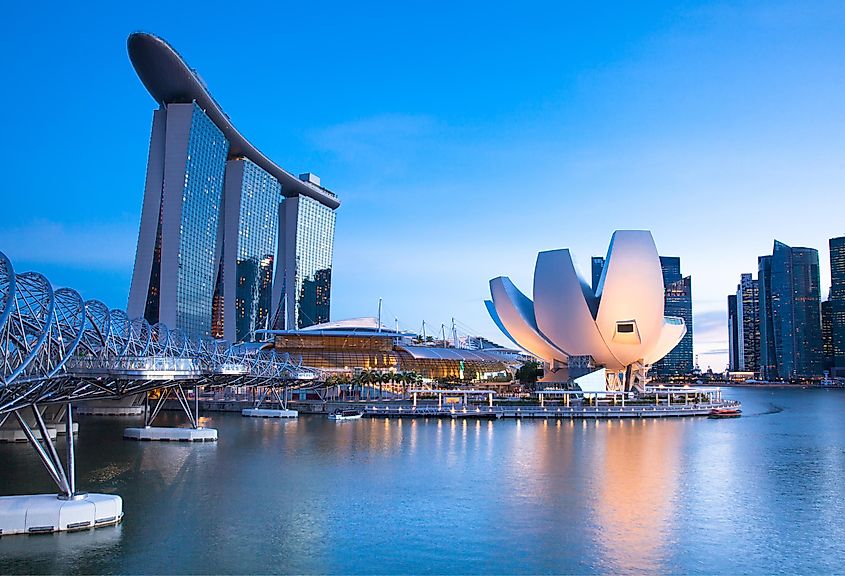
If you're looking for vacation destinations safe from natural disasters, Singapore has to be at the top of your list. Located in maritime Southeast Asia, the island country is a hub of tourism, receiving over six million visitors a year. With plenty of attractions like Gardens by the Bay and Marina Bay Sands, there is plenty to do in the nation. The best part is that you won't have to worry about natural disasters which are a rare occurrence here. As it is not located on a plate boundary, Singapore has no recorded earthquakes, and has only felt light tremors from other seismic events. The country is also protected from open waters thanks to Malaysia in the north and Batam Island in the south. These nations act as a buffer, so if a tsunami were to happen, minimal water would reach Singapore.
In addition to its low exposure to natural hazards, Singapore is also great when it comes to coping abilities. The government has set up various measures for disasters such as a clear Public Warning System, helplines, and the Community Emergency Preparedness Programme (CEPP). The CEPP is one of the most innovative, teaching participants core lifesaving skills and emergency procedures. Thanks to this, Singapore is the perfect combination of economy, tourism, and safety.
5. Luxembourg - 0.64
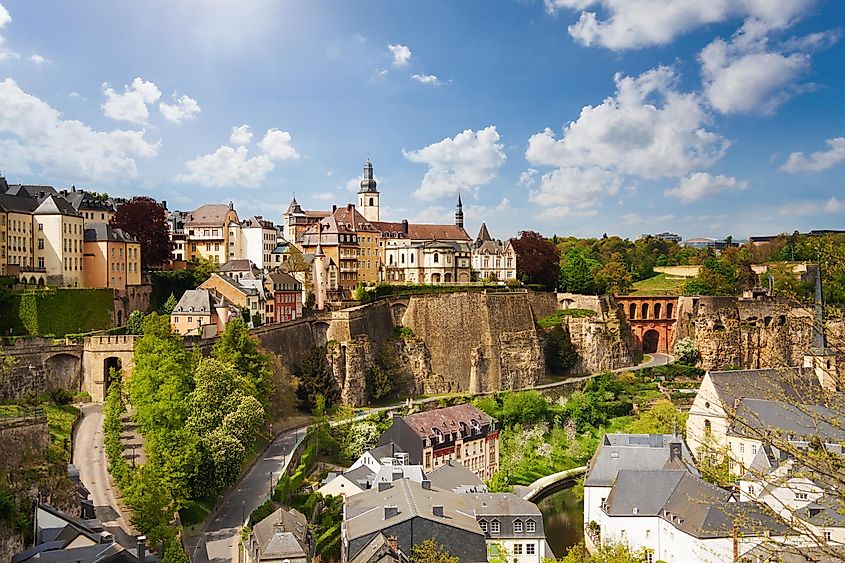
Luxembourg is a financial powerhouse in Europe, holding the top spot for GDP per capita in the world. With an estimated GDP per capita of $143,304, the country is at the forefront of human development, innovation, income, and education. These factors make Luxembourg a great place to live. They also contribute to its coping ability and adaptability to natural disasters. Apart from this, Luxembourg is fortunate to be located in Western Europe, which is astray from natural hazards. There are no major faultlines nearby, so the country is safe from earthquakes. Additionally, Luxembourg is landlocked, so a tsunami disaster would have to cross a long distance to reach the country. Although there are occasional storms, it is evident why Luxembourg is the 5th safest country from natural disasters.
6. Sao Tome And Principe - 0.67
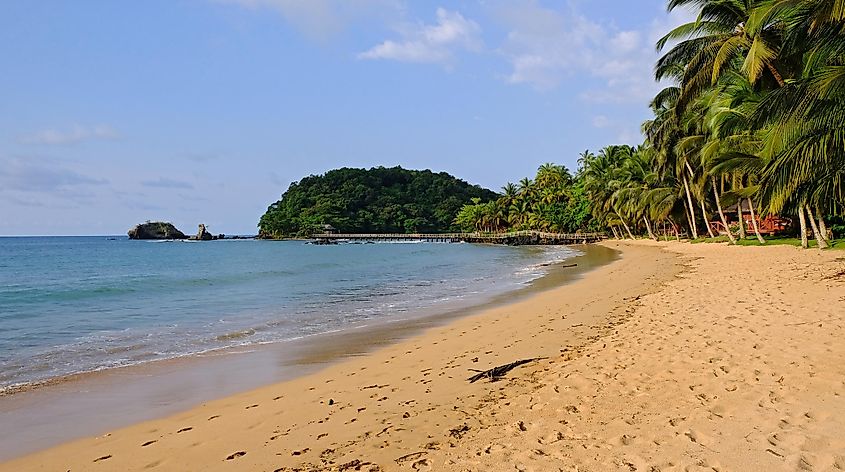
Sao Tome and Principe, the sixth country on this list, is an island nation nestled in the Gulf of Guinea. This nation, unlike the previous two countries, consists of two islands and miles of water surround it. Most of the country consists of plantations because the environment here is ideal for cocoa and sugar production. In addition to being suitable for agriculture, Sao Tome and Principe's location also keeps it safe from earthquakes. This is because it lies on the African tectonic plate, which is considered to be a stable seismicity region.
That said, Sao Tome and Principe does face occasional storms and floods due to its proximity to water. For example, in May 2022, the nation saw rain and flooding that caused damage to over a dozen properties. These events are few and far between, which gives Sao Tome and Principe a low score when it comes to natural hazard exposure. Although the country is lacking in coping ability and adaptability, it boasts a high freedom of speech, political freedom, and economic freedom. To this end, the nation is not as vulnerable, making it the 6th safest from natural disasters.
7. Liechtenstein - 0.72
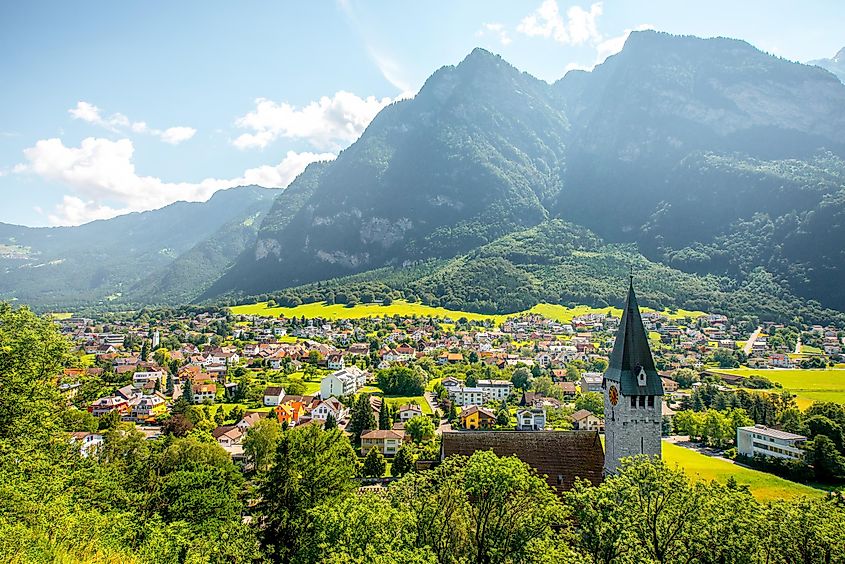
Liechtenstein is the world's sixth smallest nation, situated between Austria and Switzerland in Europe. The country has a rural atmosphere, with a network of villages and a population of only 40,000. Despite its size, Liechtenstein is one of the wealthiest countries in the world. When adjusted for purchasing power parity, it has one of the world's highest gross domestic products per capita. This high GDP is due in part to a strong financial sector and low taxation. From a natural disaster perspective, Liechtenstein's high GDP is a positive. It allows the country to react and rebuild efficiently in the event of a natural disaster. In 2023, WorldRiskIndex gave Liechtenstein a great exposure and coping capacities score.
Liechtenstein, surrounded by landlocked countries, is also one of two doubly landlocked nations in the world. This protects it from water-based disasters, which are too far away to cause major damage. Liechtenstein does experience earthquakes up to magnitude 5 every few months. Sometimes, these earthquakes cause minor mudslides and landslides in mountainous areas. Fortunately, the country is quick to react, ensuring a safe environment for its residents.
8. Belarus - 0.75
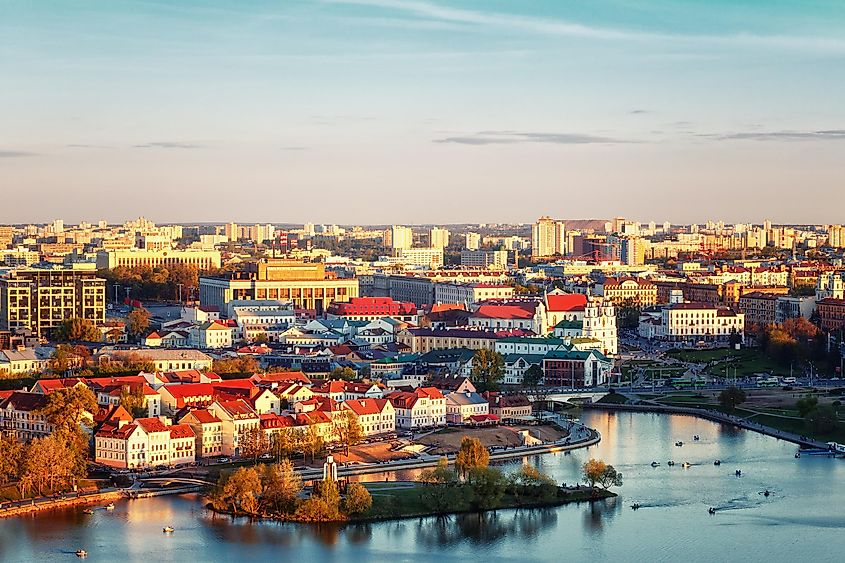
Belarus is a landlocked country in Eastern Europe with plenty of natural sights. Nicknamed "The lungs of Europe," it is a haven of forests, cobblestone paths, and majestic castles. When it comes to natural disasters, Belarus benefits from its location. As the nearest body of water is the Baltic Sea, tsunamis and floods are a distant threat. Moreover, the 80,200 sq. mi. (207,600 sq. km.) country lies on the Eastern European Craton, an ancient part of the Eurasian Plate. This region has a low-medium earthquake risk, and the country has only faced one major earthquake in the past decade.
Hand in hand with the low risk, the Belarus government is proactive in disaster management and has taken several important measures. This includes the incorporation of specialized education, disaster management technologies, and societal growth. For example, the country uses Life Safety Centers, which create real disaster situations and showcase how people should react. Thanks to these steps taken by the government, Belarus is astray from the risk of natural disasters.
9. Bahrain - 0.87
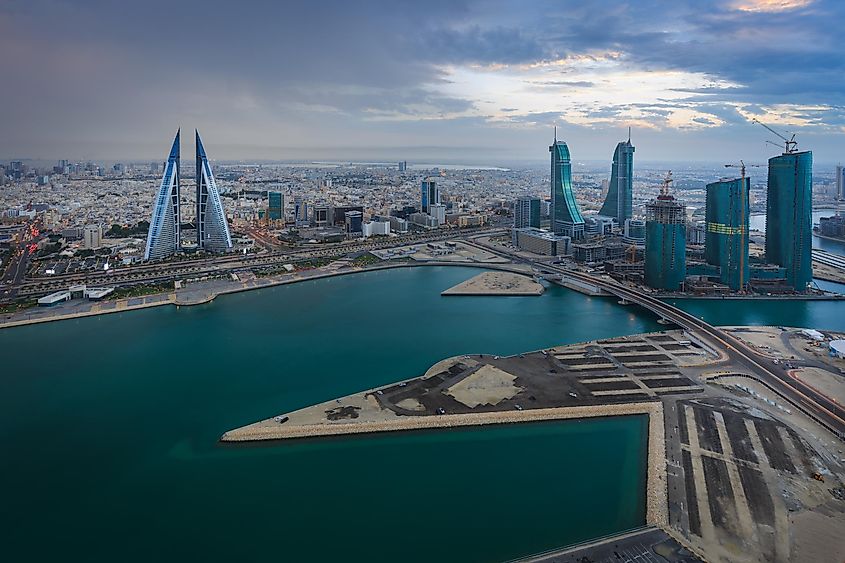
Another tourist hotspot and island country, Bahrain, ranks 9th on the list of countries with the least natural disaster risk. Situated in the Persian Gulf, it is made up of more than 80 natural and artificial islands that house over 1.5 million residents. This is all located in an area of 290 sq. mi. (760 sq. km.), making it one of the smallest in Asia. From a natural disaster perspective, these factors increase safety immensely. For example, Bahrain's location in the Persian Gulf, bordered by the landmasses of Iran, Saudia Arabia, Kuwait, and the UAE, keeps it sheltered from ocean-related natural disaster risks like tsunamis.
In addition, Bahrain lies on the Arabian tectonic plate, which is geologically stable and has a low chance of earthquakes. The only natural issue seen in recent years are droughts caused by the region's extreme heat. That said, even if a major disaster were to occur, the country has good infrastructure, planned services, and food assistance that bolster its coping capacities. Thus, with a low chance of hazards and high ability to cope, Bahrain is one of the world's safest countries from natural disasters.
10. Malta - 0.88
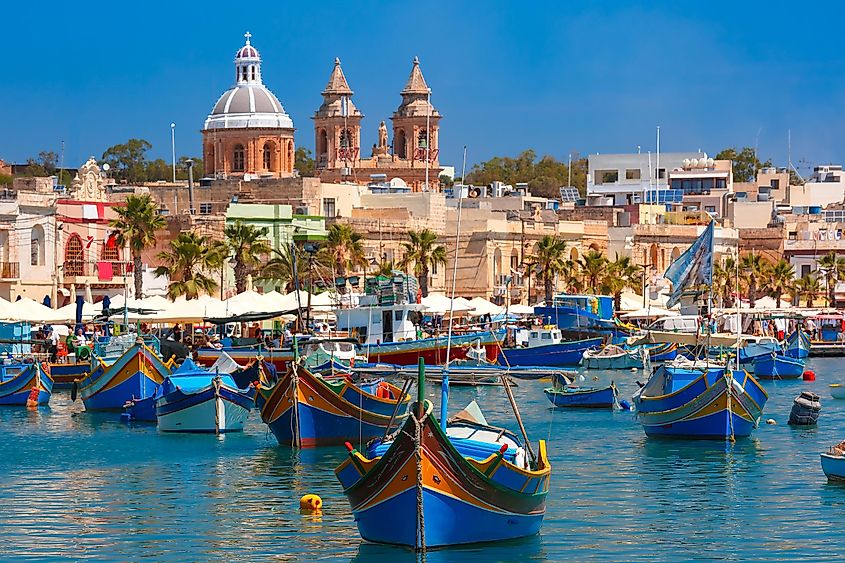
Malta is a beautiful island country in the Mediterranean Sea known for its coastal allure. Millions of tourists visit each year to explore the diving sites, stunning landscapes, and lively festivals. Along with its tourist beauty, Malta is also one of the world's safest countries when it comes to natural disasters. While it lies in a significant seismic zone along the Maltese Archipelago, there is little to no history of earthquakes in the region. In terms of aquatic disasters such as tsunamis and floods, one of the key factors for safety is access to clean water. As Malta has a strong water supply and developed infrastructure, it can defend against such disasters.
That said, with less than a dozen major natural events in the past century, residents do not have to worry about unforeseen disasters. In addition to this, the country received favorable scores when it came to its coping capacities and adaptive capacities. Thanks to its strong economy and growing tourism industry, it is safe to say that Malta has a low natural disaster risk so tourists can visit year-round.
| Rank | Country | Risk Score |
|---|---|---|
|
1 |
Andorra |
0.22 |
|
2 |
Monaco |
0.24 |
|
3 |
San Marino |
0.36 |
|
4 |
Singapore |
0.63 |
|
5 |
Luxembourg |
0.64 |
|
6 |
Sao Tome and Principe |
0.67 |
|
7 |
Leichtenstein |
0.72 |
|
8 |
Belarus |
0.75 |
|
9 |
Bahrain |
0.87 |
|
10 |
Malta |
0.88 |
|
11 |
Hungary |
0.94 |
|
12 |
Slovakia |
0.95 |
|
13 |
Denmark |
0.99 |
|
14 |
Nauru |
1.00 |
|
15 |
Switzerland |
1.02 |
|
16 |
Czech Republic |
1.12 |
|
17 |
Austria |
1.15 |
|
18 |
Qatar |
1.15 |
|
19 |
Cape Verde |
1.18 |
|
20 |
Maldives |
1.19 |
Primary Factors Affecting Natural Disaster Risk
Calculating the natural disaster risk of a country is a tedious task that involves various measures. To efficiently understand and quantify the risk, the WorldRiskIndex takes into account factors such as:
- Exposure - This factor indicates how exposed a country is to natural disasters and the chances of major hazards occurring.
- Susceptibility - Susceptibility takes into account indicators like social disparity and socio-economic development to quantify how susceptible a country is to natural hazard damage.
- Lack of coping capacities - Coping capacities are judged based on political stability, healthcare, infrastructure,
- Lack of adaptive capacities - Adaptive capacities look at education, research, and disaster preparedness to understand how well a country can adapt to natural disaster situations.
In addition to their safety, most of these countries boast great tourist attractions, ideal services, and a strong economy. These features make them perfect for people looking to travel or emigrate. Whether you want to get away from the stress of disasters or find a safe place to call home, these countries have got you covered.











